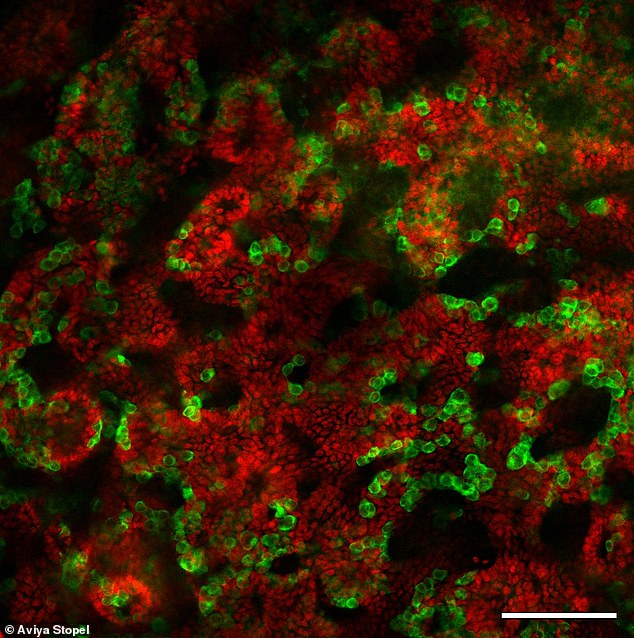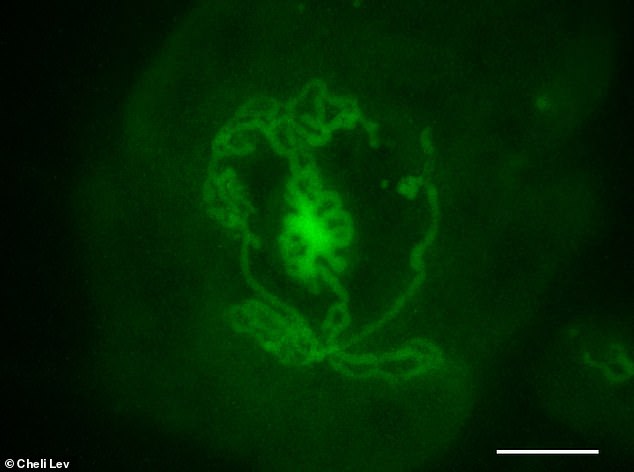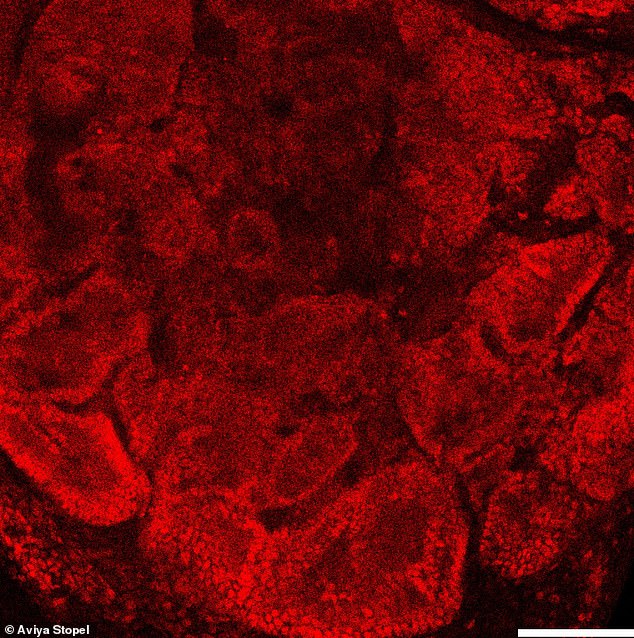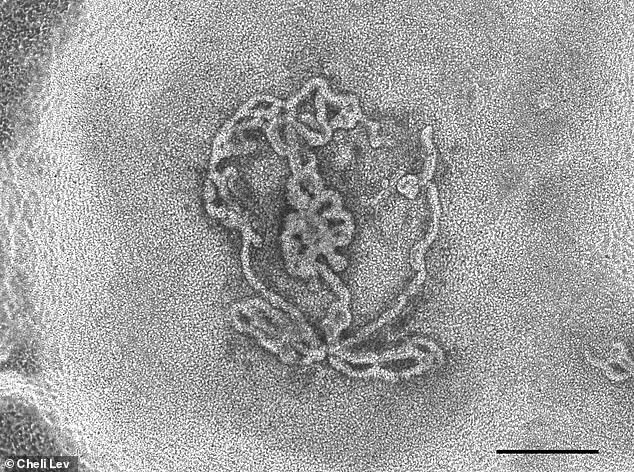Scientists have announced they have grown artificial testicles in a dish, a development they say could help treat infertility in men.
These lab-grown testicles are not yet fully functioning sperm-producing organs, but they share many of the same structures and genetic characteristics as natural ones.
This will allow scientists to investigate fertility problems in men and possibly treat them by producing artificial sperm.
Additionally, the scientist who led the work told DailyMail.com that she believes these artificial testicles can be used to study the effects of different toxins on testicular function.
Increasingly, research has suggested that environmental pollutants in everything from food to children’s toys affect male fertility, and many believe the rise of these chemicals is partly fueling the fertility problem in the United States. Joined.
This testicular organoid was incubated in a laboratory dish for 14 days. Tubular structures are a crucial part of the anatomy of the testes, suggesting that this organoid functions as expected.
And in the future, the technique used to grow these artificial testicles could help survivors of childhood cancers have children of their own if chemotherapy leaves them infertile.
“We plan to create human testicular organoids and explore whether a sperm can be generated there,” said lead researcher Nitzan Gonen, a researcher at Bar Ilan University in Israel.
Artificial sperm would presumably have faithful copies of a man’s DNA, because they would develop from his own stem cells.
Fertility problems affect 10 to 15 percent of men, and male infertility plays at least a partial role in half of all cases of couples failing to conceive.
But scientists find it difficult to study the causes of male infertility, since there is currently no laboratory model to study the testicles.

These testicular organoids were cultured from cells from mouse pups and incubated in a dish for 21 days. Sertoli cells (red) are responsible for the formation of tubules in the testicle. The germ cells (green) will produce sperm.
That’s where these testicular organoids come in, miniature 3D models of testicles that can be used to study reality.
In the past, scientists had to rely on data collected from testicles of people who had died, which do not offer the same insights as these organoids, which are not alive but continually grow as if they were alive.
The artificial testes in this study started from stem cell samples taken from newborn mouse testes or embryos.
Stem cells have the potential to become any of the body’s many types of cells, including the brain, muscles, skin, and testicles.
To grow the testes, Gonen’s team placed these stem cell samples in lab dishes and coaxed them to develop into the different types of cells that make up mouse testicles.
There they grew for several weeks and scientists periodically examined them to see if they looked like naturally grown mouse testicles.
The result is not exactly testicles, but structures called “testicular organoids”, that is, small versions of the organs that contain the same cell types as the original and behave in a similar way.

This testicular organoid was created from mouse embryos and incubated in a dish for 14 days. The tubular structures are the same. Marked in green are the Sertoli cells, which are the cells responsible for the formation of the tubules in the testicle and actually create the tubules in the plate.
Organoids look a lot like organs in the embryonic stage of development, Gonen said.
After eight weeks or more, the testicular organoids showed signs that they were entering meiosis, the stage of the testes’ life cycle in which they produce sperm.
The testicles are made up of several different types of cells that perform multiple functions, including the production of sperm and the release of hormones.
Crucially, they found that testicular organoids could be grown from newborn or embryonic mice, but not from adults.

These 21-day-old cells are found in testicular organoids. They are called Sertoli cells and the tubular cells necessary for the functioning of the testicles grow in them.
When examining the testicular organoids, Gonen and his team observed that they contained some of the structures essential for normal testicular function: tubules, germ cells, and Sertoli cells.
Tubules transport sperm, germ cells produce sperm, and Sertoli cells help form the tubules.
All of these were present in the testicular organoids.
He study appeared in the International Journal of Biological Sciences.
“We still can’t say for sure whether our organoids allow full sperm production in the plate, but we saw signs that the germ cells in the organoids we generated are entering meiosis,” Gonen said. Meiosis is the process by which sperm reduce their DNA by half in preparation to fertilize an egg.
“We are now working to better understand whether we can produce sperm.”
The team is now working to find out if these organoids can actually produce sperm and if they can produce sex hormones such as testosterone.
They also plan to see if they can develop similar artificial testicles from biopsies taken from prepubescent boys who are about to undergo chemotherapy.
Gonen said she and her team also want to grow “fully artificial testes” from stem cells, not just testicular cells.


